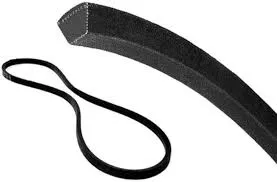- Arabic
- French
- Russian
- Spanish
- Portuguese
- Turkish
- Armenian
- English
- Albanian
- Amharic
- Azerbaijani
- Basque
- Belarusian
- Bengali
- Bosnian
- Bulgarian
- Catalan
- Cebuano
- Corsican
- Croatian
- Czech
- Danish
- Dutch
- Afrikaans
- Esperanto
- Estonian
- Finnish
- Frisian
- Galician
- Georgian
- German
- Greek
- Gujarati
- Haitian Creole
- hausa
- hawaiian
- Hebrew
- Hindi
- Miao
- Hungarian
- Icelandic
- igbo
- Indonesian
- irish
- Italian
- Japanese
- Javanese
- Kannada
- kazakh
- Khmer
- Rwandese
- Korean
- Kurdish
- Kyrgyz
- Lao
- Latin
- Latvian
- Lithuanian
- Luxembourgish
- Macedonian
- Malgashi
- Malay
- Malayalam
- Maltese
- Maori
- Marathi
- Mongolian
- Myanmar
- Nepali
- Norwegian
- Norwegian
- Occitan
- Pashto
- Persian
- Polish
- Punjabi
- Romanian
- Samoan
- Scottish Gaelic
- Serbian
- Sesotho
- Shona
- Sindhi
- Sinhala
- Slovak
- Slovenian
- Somali
- Sundanese
- Swahili
- Swedish
- Tagalog
- Tajik
- Tamil
- Tatar
- Telugu
- Thai
- Turkmen
- Ukrainian
- Urdu
- Uighur
- Uzbek
- Vietnamese
- Welsh
- Bantu
- Yiddish
- Yoruba
- Zulu
ਦਸੰ. . 31, 2024 13:11 Back to list
Innovative Applications and Benefits of Synchroflex Belts in Modern Machinery
Understanding Synchroflex Belts A Comprehensive Overview
Synchroflex belts are an essential component in the realm of mechanical engineering, particularly in power transmission systems. They are specifically designed to transmit motion and power efficiently between shafts while minimizing slippage. These belts are categorized under synchronous belts, which operate based on the principle of engaging with matching tooth profiles on both the belt and the pulleys. This article aims to delve deeper into the characteristics, applications, advantages, and maintenance of Synchroflex belts, highlighting their significance in various industries.
Characteristics of Synchroflex Belts
Synchroflex belts are made from high-quality materials such as neoprene or polyurethane, which provide durability and flexibility. The most distinguishing feature of these belts is their toothed design. The teeth ensure that the belt fits snugly against the pulley, allowing for precise control of movement and reducing the chances of slipping. This tooth engagement allows for higher efficiency in power transmission compared to traditional V-belts, which can suffer from slippage under heavy loads.
Moreover, Synchroflex belts are available in a range of profiles and sizes, catering to various applications. They can be customized to fit specific requirements, such as length, tooth pitch, and width. The belts are designed to withstand various environmental conditions, including temperature fluctuations and exposure to oils or chemicals, making them suitable for diverse industrial applications.
Applications of Synchroflex Belts
Synchroflex belts find extensive use across multiple industries due to their reliability and efficiency. Some common applications include
1. Industrial Machinery They are widely used in conveyor systems, packaging machines, and robotics, ensuring smooth and constant motion transmission. 2. Automotive Engineering In the automotive sector, Synchroflex belts are essential in timing belt applications, where precise timing of engine components is critical for optimal performance.
3. Agricultural Equipment The agricultural industry utilizes these belts in various machines such as harvesters and tractors, where reliable power transmission is vital.
4. Printing and Textile Machines These belts ensure the synchronized movement of rollers and other machinery components, leading to improved quality and efficiency in production.
5. Home Appliances From washing machines to food processors, many household appliances rely on Synchroflex belts for their operation, highlighting their versatility.
Advantages of Synchroflex Belts
The use of Synchroflex belts provides several benefits, making them a preferred choice in many applications
synchroflex belt

- Increased Efficiency The synchronous design minimizes energy loss, contributing to higher efficiency levels compared to other belt systems. - Reduced Maintenance Due to their robust construction and low slippage rates, Synchroflex belts require less frequent adjustments and replacements, translating to lower maintenance costs.
- Noise Reduction The engagement of teeth results in quieter operation compared to traditional V-belts, making them suitable for noise-sensitive environments.
- Higher Load Capacity These belts can transmit more power within a smaller footprint, allowing for compact design solutions in machinery.
Maintenance of Synchroflex Belts
Proper maintenance is crucial for the longevity and performance of Synchroflex belts. Here are some essential maintenance tips
1. Regular Inspection Routine checks can help identify wear and tear early, preventing more significant issues down the line.
2. Alignment Ensure that the pulleys are properly aligned; misalignment can lead to uneven wear and premature failure.
3. Correct Tensioning Maintaining the right tension is essential. Too much tension can strain bearings, while too little can lead to slippage.
4. Cleanliness Keep the belt and pulleys free from debris, dust, and oil, which can interfere with performance.
5. Replacement Timing Stay vigilant regarding the signs of wear. Replacing the belts at scheduled intervals can mitigate the risks of unexpected failures.
Conclusion
In conclusion, Synchroflex belts play a pivotal role in modern engineering applications, providing efficient and reliable power transmission. Their unique design, coupled with their versatility, makes them suitable for various industries. Understanding their characteristics, benefits, and maintenance requirements can help users harness their full potential, ensuring enhanced performance and longevity of machinery. With the continuous advancement in materials and technology, the future of Synchroflex belts remains bright, paving the way for innovations in power transmission solutions.
-
Korean Auto Parts Timing Belt 24312-37500 For Hyundai/Kia
NewsMar.07,2025
-
7PK2300 90916-T2024 RIBBED BELT POLY V BELT PK BELT
NewsMar.07,2025
-
Chinese Auto Belt Factory 310-2M-22 For BMW/Mercedes-Benz
NewsMar.07,2025
-
Chinese Auto Belt Factory 310-2M-22 For BMW/Mercedes-Benz
NewsMar.07,2025
-
90916-02660 PK Belt 6PK1680 For Toyota
NewsMar.07,2025
-
drive belt serpentine belt
NewsMar.07,2025

